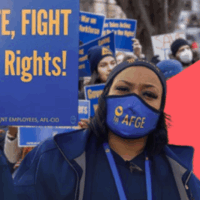Washington, D.C.—In recent weeks, much has been said about working-class white voters’ economic anxieties and role in the election. A policy brief released today by the National Employment Law Project underscores how white voters are not alone in facing economic insecurity.
“Women and people of color disproportionately earn under $15 an hour, and their experience serves as a bellwether for other struggling workers,” said Laura Huizar, a staff attorney with the National Employment Law Project and co-author of the new brief.
The brief, What a $15 Minimum Wage Means for Women and Workers of Color, breaks down the demographics of workers who make less than $15 an hour. While 42 percent of all workers in the U.S. earn less than $15 an hour, more than half of African American workers, close to 60 percent of Latino workers, and almost half of women workers earn under $15 per hour.
“Women and workers of color are earning poverty-level wages despite powering some of our fastest-growing and most important industries,” Huizar added. Six out of the 10 largest occupations with median wages less than $15 per hour—including nursing assistants and fast-food workers—are among the occupations projected to add the most jobs between 2012 and 2022.
The brief also shows how the over-representation of people of color at the lowest wage levels has contributed to the persistence of a large racial and gender pay gap in the United States. In 2015, the median hourly wage was just $15 for African American men and $14 for Latino men, compared with $21 for white men. Women continue to earn just 80 percent of the median hourly wage for men, and women of color experience an even larger gap. The median African American woman earned 63 percent of what the median white man earned in 2015, and the median Latina woman earned even less—just 54 percent of the white male median wage.
The median net worth of white families is now more than 10 times that of African American or Latino families, and the brief explains how this racial wealth gap has contributed to unique cycles of debt, poverty, and criminalization for poor communities of color.
The brief also highlights that the richest top 1 percent of Americans now own 40 percent of the nation’s wealth, while the bottom 80 percent own only 7 percent. “Raising the minimum wage could play a critical role in reversing years of extreme wealth accumulation for the top 1 percent and reducing pernicious race and gender wealth gaps that leave families vulnerable and living paycheck-to-paycheck,” said Tsedeye Gebreselassie, a senior staff attorney at NELP. “It’s clear that the pie in this country is large enough for all workers to live dignified lives and build a better future for their children.”
Finally, the brief emphasizes that federal action to increase the minimum wage is a racial justice issue. The 21 states where the minimum wage remains at just $7.25 per hour have some of the largest African American populations in the country. In fact, seven of the ten states, including Washington, D.C., with the highest percentage of African Americans remain stuck at $7.25. Of the 20 states with the highest rates of African Americans in poverty, half maintain a $7.25 minimum wage.
The lack of movement to raise the federal minimum wage has taken its toll on millions of workers in those states, including Santa, a fast-food worker profiled in the brief. Santa has worked for McDonald’s for 22 years in Texas, a state where the minimum wage remains at $7.25. She started out earning $5.15 per hour and now earns $9.00 per hour. Despite decades of work at McDonald’s, she has no money left over after paying her car payments, insurance, gas, and other basic necessities. It also pains her not to have time to spend with her eight-year-old son. “I want a dignified life that they deserve,” she said, adding, “Sometimes, I get home just to put on another work shirt, and my son will say to me, how long will this go on? I can only look at him with my heart breaking and go.”
“Raising the minimum wage is about economic justice, racial justice, and gender equality,” said NELP’s Huizar. “Women and people of color play an integral role in our economy, but their contributions have long been devalued. A $15 minimum wage presents an opportunity to help women and workers of color overcome intractable barriers that continue to hold back their potential. Ultimately, when we lift workers and families at the bottom of the economic scale, we lift standards and opportunities for everyone.”
DOWNLOAD NOW:
What a $15 Minimum Wage Means for Women and Workers of Color
###





